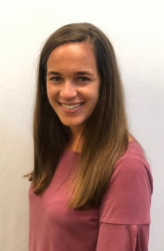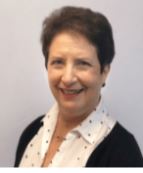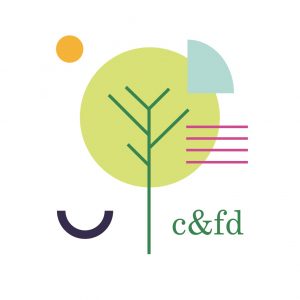By Gail Fennimore and Abby Morton, Child and Family Development
This is Part 2 of our series on scoliosis. The purpose of the series is to increase awareness about the signs and symptoms of this condition, to educate practitioners and the general population in the different types and to raise awareness about treatment methods. In Part 1, we gave an overview of Adolescent Idiopathic Scoliosis (AIS), the most common form of this condition. In Part 2, we focus on the second most common form of scoliosis: Neuromuscular Scoliosis (NMS).
Neuromuscular Scoliosis (NMS)
What is it?
Neuromuscular Scoliosis (NMS) is a non-congenital spinal deformity that occurs secondary to an underlying neuromuscular medical condition. Neuromuscular conditions tend to affect muscle strength or tone and/or cause asymmetry of postural alignment. A result, over time, is often a curvature of the spine. As in AIS, this means the spine can rotate, tilt forward or backward, and tilt to the right or left. In NMS, the deformity can begin at any age and progresses more quickly and relentlessly than AIS. Cerebral Palsy (CP), Duchenne muscular dystrophy (DMD), Myelomeningocele, Spinal muscular atrophy (SMA), Friedrich ataxia and Spinal cord injury are common neuromuscular conditions in which NMS may occur.
What is the process of diagnosis and testing involved?
Scoliosis must be considered as a possibility in most neuromuscular conditions. Once there is a suggestion of a scoliosis, the diagnosis is confirmed through a physical examination, x-ray, spinal radiograph, CT scan or MRI just as it might be in AIS. These tests determine the extent of the spine’s curve measured in degrees. The degree of the curve and the underlying neuromuscular condition guide the decision process for treatment. Visible changes in the body include a horizontal shift of the spine; an asymmetrical shoulder and shoulder blade, trunk, or hips; a hump in the rib cage and changes of natural kyphosis and lordosis curves of the spine. The healthcare provider team typically involves the pediatrician, orthopedist, neurologist, and physical therapist.
What is the prognosis?
Early detection of scoliosis, regardless of the “why,” is important for monitoring, managing, and gaining a thorough understanding of the body and its changes. In NMS, severity and prognosis are often dependent on the underlying medical condition and the age of detection. The goal at diagnosis is to understand the likely progression of the curve related to the neuromuscular diagnosis. Studies have identified some individualized approaches that benefit specific diagnoses.
The risk of NMS increases with age and Gross Motor Function Classification (GMFC). The GMFC is a criterion based ranking system 1 to 5 that relates to motor abilities of children with neuromuscular diagnoses. The higher the GMFC the more likely that scoliosis may occur. A score of 4 or 5 on the GMFC indicates a non-ambulatory child that must rely on a wheelchair for mobility and has poor ability to sit independently.
Risks of not managing NMS include cardiopulmonary difficulties, mechanical difficulties with postural alignment for sitting or walking, pain, difficulty with caregiving and skin issues related to pressure areas.
Treatment
There are two basic treatment strategies for NMS: non-operative or operative management. Most of the time initial treatment is non-operative or conservative addressing positioning, exercises and/or bracing.
As the severity of the scoliosis increases, operative management is more likely. The severity of the underlying condition is directly proportional to the severity and rate of progression of the scoliosis in most situations.
Treatment is somewhat dependent on the underlying condition. For instance, research has shown that for children with DMD, long-term steroid treatment is effective in decreasing the incidence of NMS. In SMA, early surgical treatment is often effective in severe cases to minimize the effects of NMS. In CP, the degree of the curve by age 12 is a significant indicator of the progression of the curve. A curve of <40 degrees is less likely to progress and can be managed conservatively and a curve ≥ 40 degrees is likely to benefit from surgical treatment. The role of a therapist is to follow evidence-based treatment methods to address current symptoms and mechanical issues with daily activities and to provide information and educate the family on expectations of posture and abilities as the body grows. A therapist can assist in planning supportive seating for a wheelchair or other adaptive equipment, help plan strategies for daily care and refer to appropriate providers for further assessment.


Gail Fennimore, PT and Abby Morton, DPT are pediatric Physical Therapists based at Child & Family Development’s Midtown office location. Gail has been in practice since 1974 and joined C&FD in 1994. Abby has been in practice since 2019 and officially joined the team in 2020. Not only are Gail and Abby coworkers, they both graduated from the University of Tennessee Health and Science Center in Memphis, TN.
Child & Family Development

Locations:
Mitdtown:
4012 Park Road, Suite 200
Charlotte, NC 28209
704.332.4834
Pineville:
11940 Carolina Place Parkway, Suite 200
Charlotte, NC 28134
704.541.9080
Website | Facebook | Instagram | Twitter



